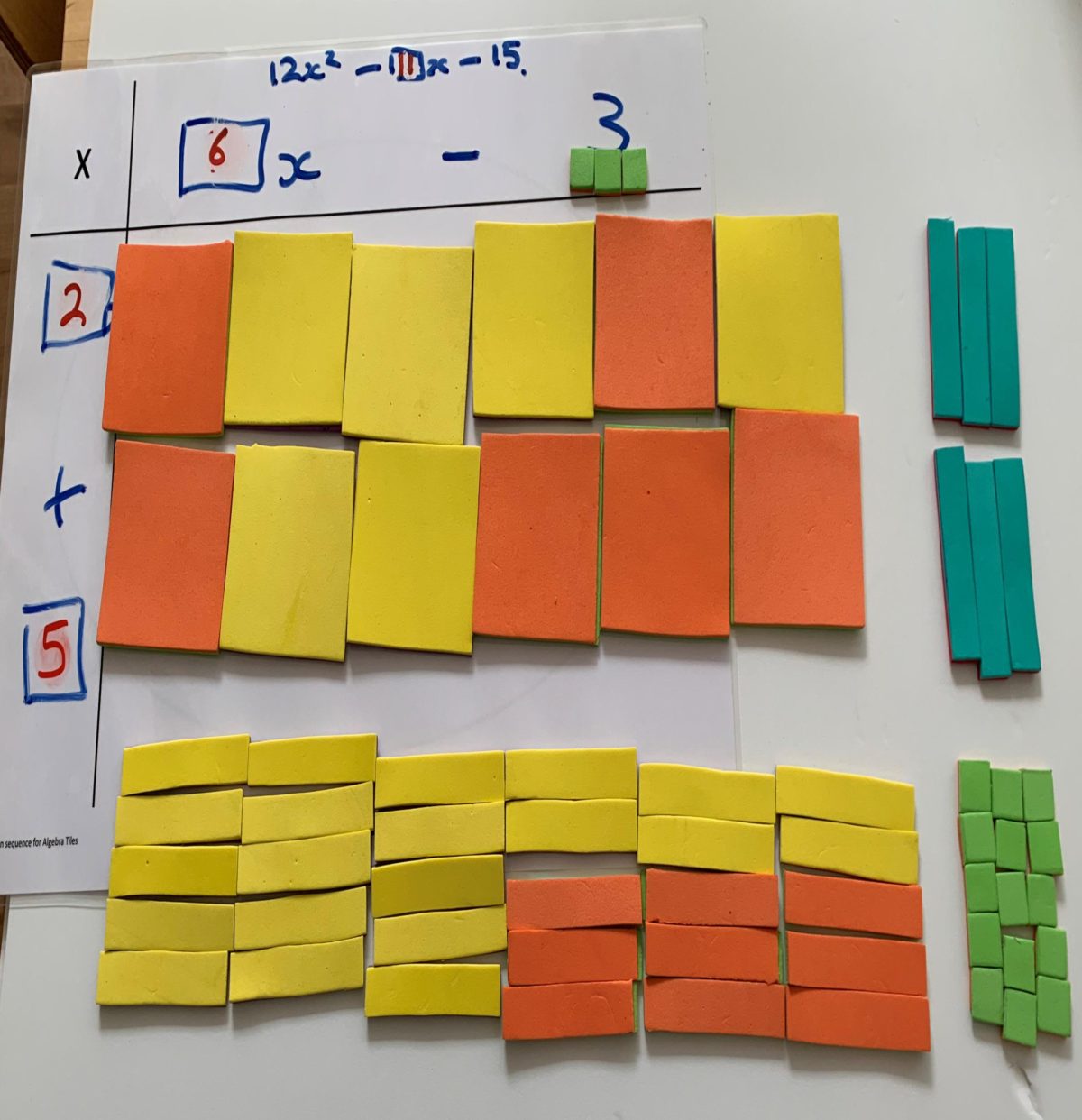I am putting together a series of blog posts demonstrating how to use Algebra Tiles for the new year. As algebra tiles are on my mind, when I saw this Open Middle problem posed in a tweet from Robert Kaplinsky I decided to give it a go using Algebra Tiles.

Algebra Tiles are a great manipulative to use when you introduce algebra to students. They allow the students to explore concepts such as adding and subtracting expressions, factorisation and substitution. There are three different tiles representing the constant, the variable and the variable squared. Each tile is in two colours representing positive and negative values.
The first step was to model what I knew from the given problem. I used a laminated sheet to place the tiles on and wrote what I knew on it.

I arranged the twelve x2-tiles in a rectangle and this gave me my starting point in finding a solution. The arrangement of these tiles was just a random choice.
I noticed that two of the given numbers in the problem limited my choice of the constant in the second factor pair. The -3 in the top factor pair and the -15 in the final expression, restricted my choice of value in the second-factor pair. It had to be +5.
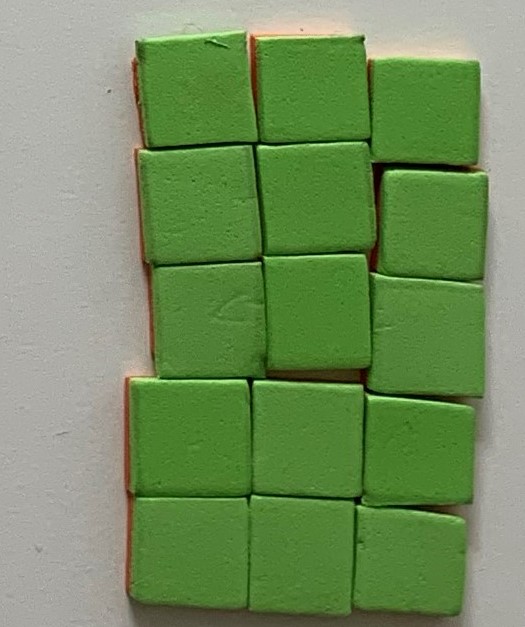
I then filled in all the other tiles:
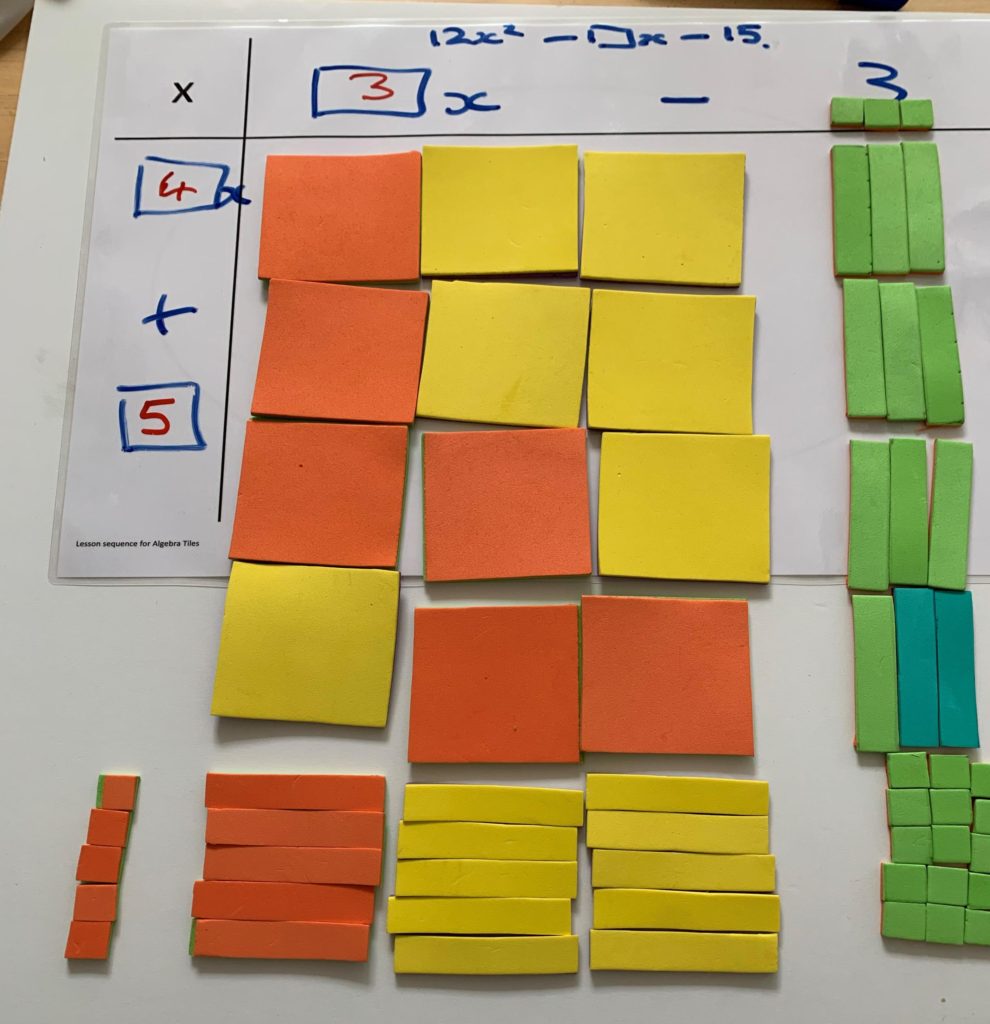
A basic feature of Algebra Tiles is Zero-Sum Pairs. When you have two tiles of the same size and shape, but different colour, they form a zero-sum pair and can be removed. (They cancel each other out)
I formed all the zero-sum pairs of the x-tiles:
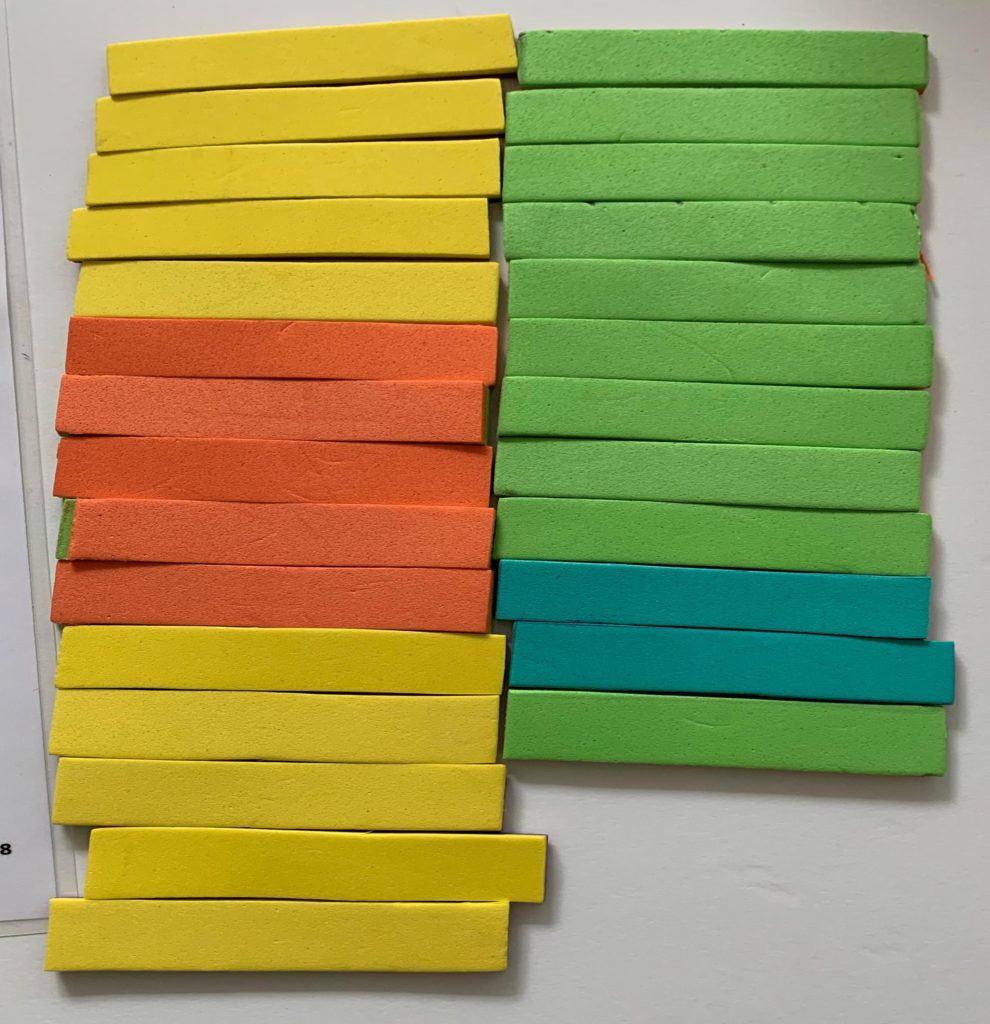
There were three more positive x-tiles than negative x-tiles remaining. as the coefficient of the x-term has to be negative this was not an allowable solution.
My next strategy was to reverse the 3 and the 4 to see if that would leaver me with more negative x-tiles.
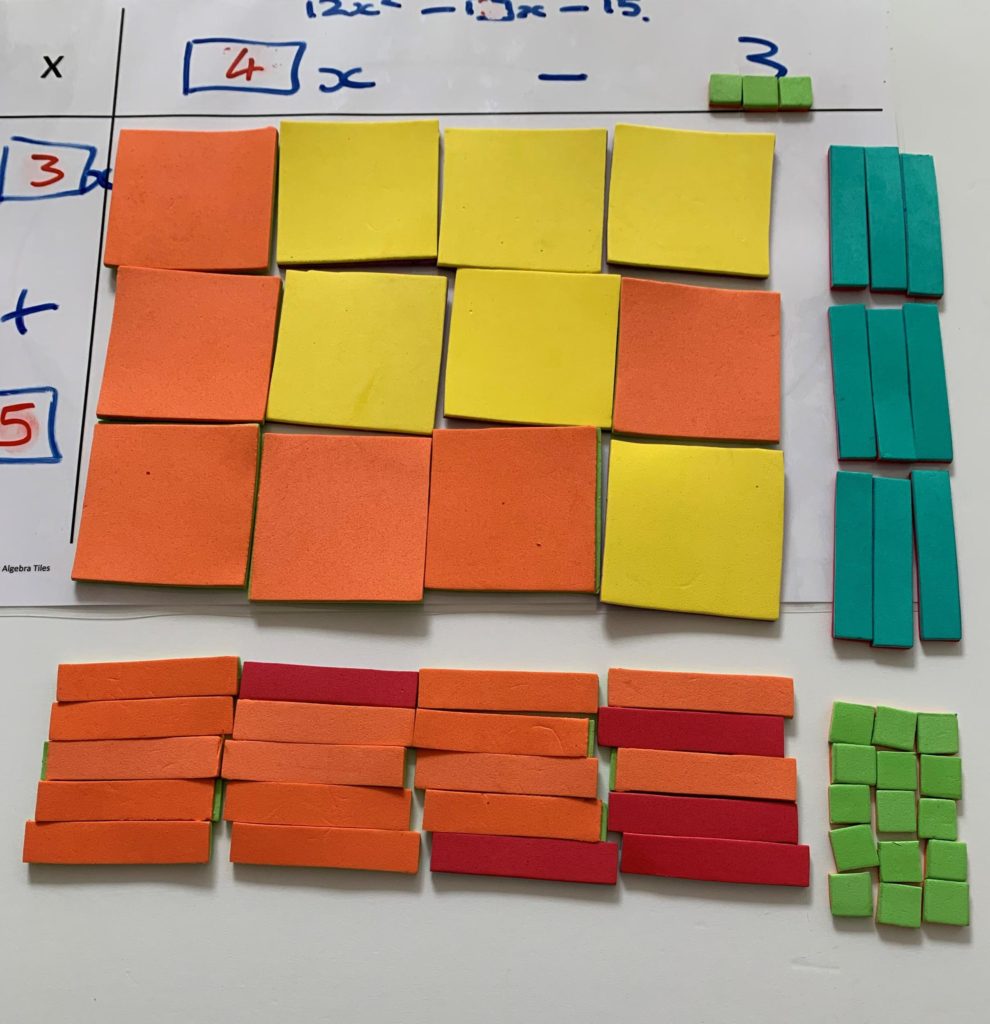
Again, I could quickly see that there were too many positive x-tiles.
I then started to explore other factors of 12: 6 x 2, 2 x 6
First I arranged the tiles 2 x 6:
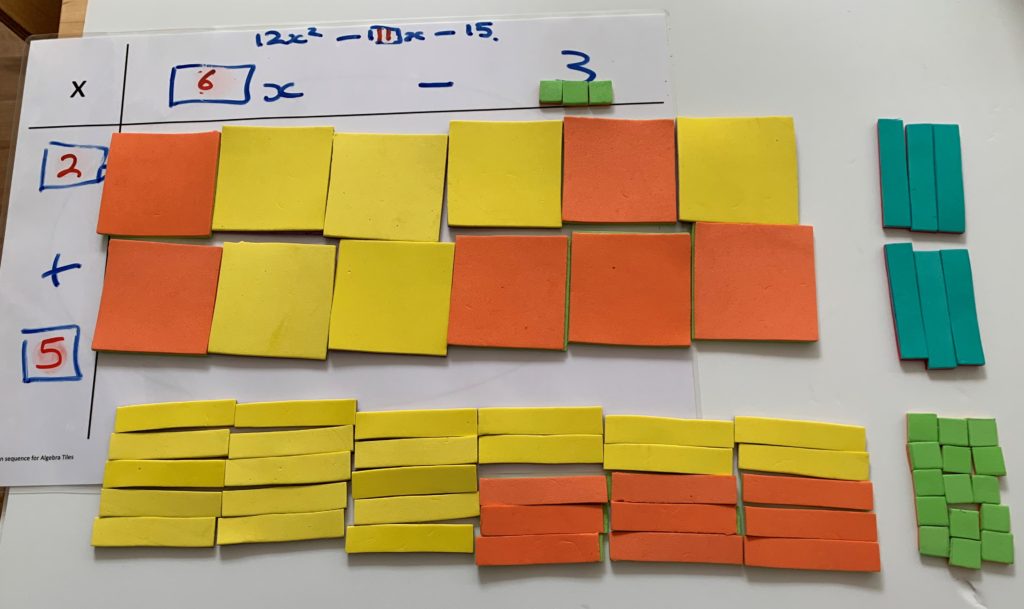
But there were too many positive x-tiles.
So I switched to 6 x 2:
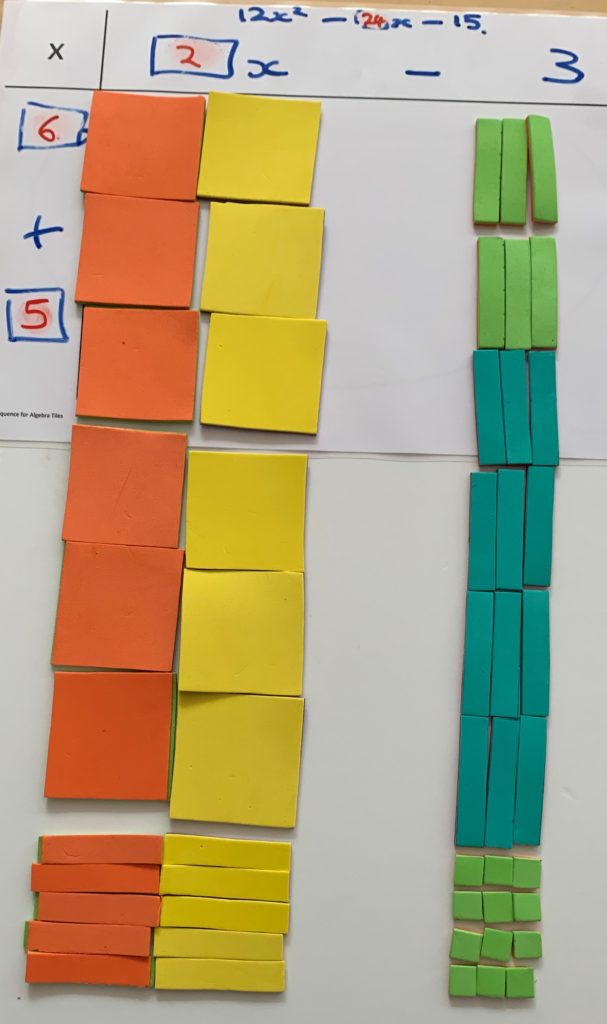
At last! In this arrangement there were more negative x-tiles! I arranged the x-tiles in zero-sum pairs to see how many positive x-tiles were remaining.
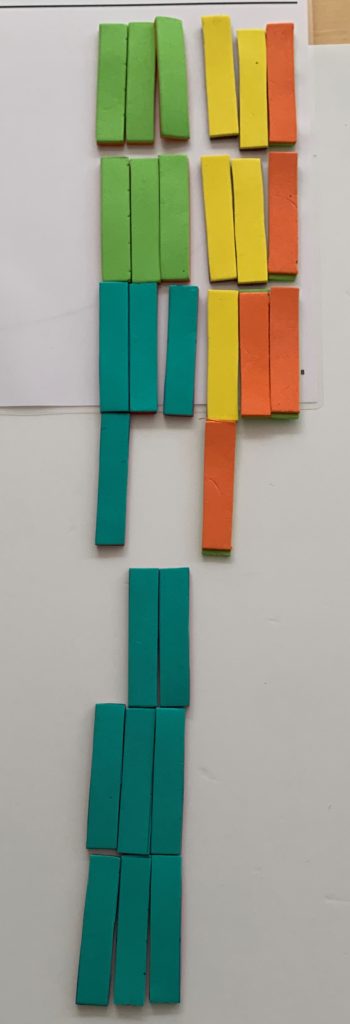
There were 8 negative x-tiles remaining so my solution was:
(6x + 5) (2x – 3) = 12x2 – 8x – 15
I thought there could be more than one solution to this problem, there normally is in Open Middle problems. So I tried the final factors: 1 x 12 and 12 x 1.
First I tried a 1 x 12 arrangement:

This time I ran out of tiles and room! There were too many positive x-tiles so I move on to my last arrangement, 12 x 1:
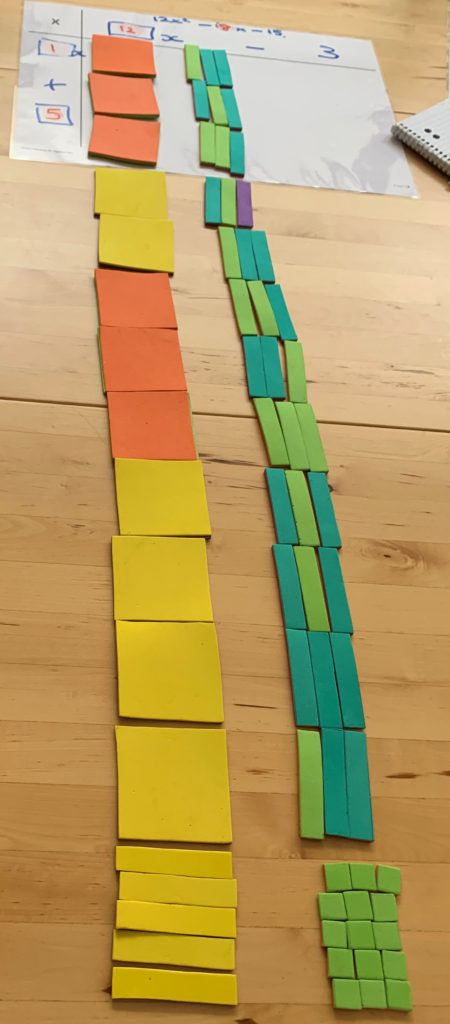
It was easy to see that there were a lot more negative x-tiles in this arrangement. This gave me the solution:
(12x + 5) (x – 3) = 12x2 – 31x – 15
I had found two solutions to the problem.
For many students, the original problem would look inaccessible. Algebra and the notation used is scary and off-putting. By using the Algebra Tiles and building a visual representation of the problem students have a starting point, a route into the problem. Some students may not need to explore all the possibilities with the tiles. Once they have modelled a couple of possibilities many students will start to make predictions and be able to relate what they are seeing to the notation that is used.
Show the students how the arrangement of the tiles relates to the terms they get when they multiply out the brackets – connecting FOIL and the Area Model.
A nice extension of this problem would be to ask students to explore the possibilities if they were not restricted to the -3.
This and many other insights and suggestions for using Algebra Tiles to deepen students’ understanding of algebra concepts will be explored in my series next year.
Below is a link to the Algebra Tiles Learning Sequence I wrote for AMSI. The blog series will be based around this sequence.

